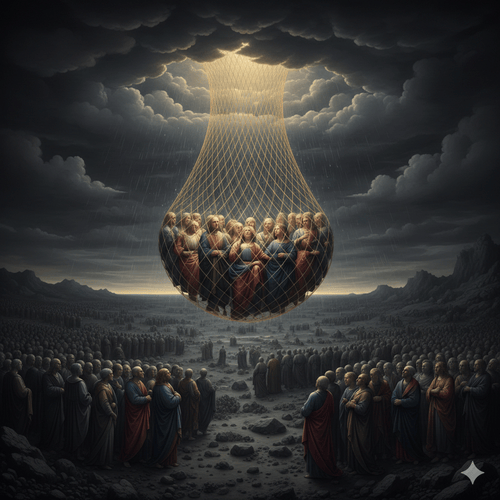Evidence that Glows: How Bioluminescence Reveals Design
In the darkest depths of the ocean, across moonlit forests, and within the soil beneath our feet, a remarkable phenomenon occurs: living organisms producing their own light. This process, known as bioluminescence, transforms creatures into displays of living light that range from the subtle glow of fireflies on a summer evening to the otherworldly blue waves that sometimes grace our shorelines.
But beyond their beauty, these living lights tell a profound story—one that points directly to intelligent design rather than random evolutionary accidents. Let’s explore why these remarkable biological light systems provide compelling evidence for a Creator’s handiwork.
THE ASTONISHING COMPLEXITY OF LIVING LIGHT
Bioluminescence Reveals Design: Imagine for a moment what it takes to create light. In our homes, it requires power plants, transmission lines, light bulbs with precisely manufactured filaments, and switches—an entire infrastructure designed by intelligent engineers.
Yet in nature, tiny organisms achieve this feat through an intricate biochemical process that’s arguably even more sophisticated. At its core, bioluminescence requires specific chemicals called luciferins that, when combined with enzymes called luciferases and oxygen, produce light through a carefully orchestrated chemical reaction.
What’s remarkable is the precision involved. The reactions must be:
- Perfectly timed
- Precisely located—in specialised organs or cells
- Extraordinarily efficient (nearly 100% energy-to-light conversion in some organisms)
- Often adjustable and controllable by the organism
Consider the humble firefly, whose light organ contains specialised cells arranged in precise layers. Behind the light-producing cells sits a reflective layer that directs the light outward. The entire system includes oxygen supply channels, nerve connections for control, and even lens-like structures in some species to focus the light.
This level of engineering speaks not of random chance but of purposeful design. Each component must work in perfect harmony with others—remove any piece, and the light goes dark.
THE PUZZLE OF IRREDUCIBLE COMPLEXITY
Evolutionary theory proposes complex biological systems develop gradually over time through natural selection acting on random mutations. Yet bioluminescent systems present a significant challenge to this explanation through what scientists call “irreducible complexity.”
The concept, emphasised by biochemist Michael Behe, describes systems where multiple parts must be present simultaneously for the system to function at all. Bioluminescence exemplifies this principle beautifully. Consider, for instance, these facts:
- If an organism develops the chemical, luciferin but not the luciferase enzyme, no light appears.
- If it has both chemicals but lacks the specialised organs to house them, the reaction is useless, even harmful.
- If it possesses all these but lacks the neural control to activate the light at appropriate times, the system provides no survival advantage.
Each component serves no purpose without the others. How could such a system evolve gradually when intermediate steps provide no benefit?
BIOLUMINESCENCE REVEALS DESIGN FEATURES AND PURPOSE
The more deeply we study bioluminescent organisms, the more evidence of design we uncover.
Take the anglerfish, which dangles a bioluminescent lure precisely where it will attract prey into its jaws. This isn’t just any light—it’s specifically the right colour and intensity to attract the exact species the anglerfish hunts. More remarkably, the light doesn’t come from the fish itself but from bacteria housed in its specialised light organ, demonstrating an intricate symbiotic relationship that benefits both organisms.
Or consider the flashlight fish, which harbours bioluminescent bacteria in special pouches beneath its eyes. The fish has specialised organs that house these bacteria, providing them with the perfect environment to thrive. Even more impressively, the fish has developed a lid-like mechanism that can cover these light organs, effectively allowing it to “blink” the light on and off.
These aren’t just happy accidents—they’re features that demonstrate foresight and purpose.
The efficiency of these natural light systems also speaks to intentional design. While the best human-made lightbulbs waste energy as heat, many bioluminescent reactions convert nearly 100% of energy into light with virtually no heat loss. Engineers dream of achieving such efficiency in our technology.
THE RIGHT LIGHT AT THE RIGHT TIME
In addition to their physical structure, what’s equally impressive is how these lights serve specific, purposeful functions:
- Deep-sea creatures produce light in the blue-green spectrum—precisely the wavelengths that travel farthest in water.
- Different species produce distinct patterns of light pulses that serve as a visual “password” to identify potential mates of the same species.
- Some organisms can control precisely when their light turns on and off, enabling complex communication.
- Counter-illumination in some sea creatures produces light on their undersides that matches the intensity of down-welling sunlight, creating perfect camouflage.
Each of these applications demonstrates not just complexity but purpose—hallmarks of intelligent design rather than random processes.
ADDRESSING THE EVOLUTIONARY EXPLANATION
Proponents of unguided evolution suggest bioluminescence evolved from enzymes originally used to detoxify reactive oxygen species. Over time, this protective mechanism supposedly transformed into light-producing systems. However, this explanation falls short on several fronts:
- It doesn’t explain how the complete system—with all its interdependent parts—developed gradually.
- It fails to account for the specialised organs that house these reactions.
- It struggles to explain why this supposedly happened independently dozens of times.
- It doesn’t address how the neural control systems necessary for these lights effectively also evolved alongside the chemical mechanisms.
The mathematical probability of such complex systems arising by chance mutations and selection—even once, let alone repeatedly—is vanishingly small.
A UNIVERSE DESIGNED TO BE SEEN
Perhaps what’s most compelling about bioluminescence is what it reveals about our universe. These living lights seem to whisper an important truth: our world was created not just to function but to be beautiful—to be seen and appreciated.
From fireflies transforming summer evenings into magical displays to deep-sea creatures illuminating the darkest places on Earth, bioluminescence adds wonder and beauty to our world in ways that serve no mere survival function. The diversity, creativity, and sheer beauty of these systems point to a Creator who values not just function but also wonder and discovery.
CONCLUSION: BIOLUMINESCENCE REVEALS DESIGN
As we’ve seen, bioluminescence presents a powerful case for intelligent design through its:
- Remarkable complexity and precision
- Irreducibly complex nature
- Purposeful and efficient design
- Multiple independent occurrences throughout nature
- Beauty that transcends mere utility
The evidence from bioluminescence aligns far more naturally with purposeful design than with random processes. These living lights invite us to look beyond materialistic explanations and consider the possibility that the beauty and complexity we observe in nature point to something—or Someone—beyond.
BIOLUMINESCENCE REVEALS DESIGN—RELATED FAQs
How many different species exhibit bioluminescence, and what does this diversity tell us about creation? Scientists have identified over 1,500 species of fish alone that produce their own light, plus countless other organisms across 800+ genera. This remarkable diversity, appearing across completely unrelated biological families from fungi to fish, strongly suggests a common Designer rather than convergent evolution. The Creator appears to have implemented this ingenious light-producing technology widely throughout creation, adapting it perfectly for each organism’s specific needs and environment.
- If bioluminescence was designed, why didn’t the Creator use the exact same mechanism in all creatures? The varied bioluminescent mechanisms we observe reflect a Creator who values creativity, diversity, and specific adaptation to different environments. Just as an engineer uses different lighting solutions for a submarine versus a streetlamp, the Creator implements distinct bioluminescent systems optimised for each creature’s unique needs. This customisation demonstrates not a limitation but rather an advanced intelligence that creates specialised solutions for specialised purposes.
- How do the different colors of bioluminescence support the design argument? Bioluminescent organisms produce light in specific colors that precisely match their needs—blue-green light in deep oceans (the only wavelengths that travel far underwater), yellow-green on land (most visible to the animal eye), and red light in specialized deep-sea predators (invisible to most prey but visible to the predator). This perfect matching of light colour to ecological function across diverse species demonstrates foresight and purpose rather than random development. The precision of these wavelength selections points to an intelligent mind that understood physics, biology, and ecology.
Could we ever replicate the efficiency of bioluminescent systems? Despite our advanced technology, we’ve yet to create lighting systems with the nearly 100% efficiency found in many bioluminescent organisms. Our best LED technology loses energy as heat, while these tiny creatures achieve perfect energy-to-light conversion with simple organic compounds. The efficiency gap suggests these systems were engineered by an intelligence far exceeding our own—a hallmark of divine rather than human design.
- What explains the symbiotic relationships many bioluminescent organisms have with bacteria? Creatures like anglerfish and bobtail squid maintain complex symbiotic relationships with bioluminescent bacteria, providing specialized organs to house these microorganisms while receiving light in return. These relationships require multiple adaptations in both host and bacteria, plus sophisticated systems to maintain the proper bacterial population. Such interdependent systems, where both organisms must simultaneously develop complementary adaptations, strongly suggest intelligent coordination rather than independent evolutionary processes.
- Is there archaeological evidence of humanity recognising bioluminescence as evidence of design historically? Ancient accounts from various cultures describe the “divine” or “magical” nature of bioluminescent phenomena, suggesting our early ancestors intuitively recognised these living lights as evidence of design. Historical documents from Greek, Chinese, and indigenous American sources describe bioluminescent organisms with language resembling “creation miracles” or “divine craftsmanship.” This cross-cultural recognition aligns with Scripture’s teaching that God’s “invisible qualities have been clearly seen from what has been made” (Romans 1:20).
How does the timing control in bioluminescent organisms challenge evolutionary explanations? Many bioluminescent organisms display remarkably precise control over when their lights activate—fireflies flash in species-specific patterns, dinoflagellates glow only when disturbed, and some deep-sea fish can turn their lights on and off at will. These timing mechanisms require sophisticated neural control systems working in perfect coordination with the chemical light-producing systems. The simultaneous evolution of both light production and precise control mechanisms presents yet another layer of irreducible complexity that defies gradual evolutionary development.
BIOLUMINESCENCE REVEALS DESIGN—OUR RELATED POSTS
Editor's Pick

Why Do People Hate the Doctrine of Election?
…WHEN THEY REALLY SHOULDN’T Few Bible doctrines provoke stronger reactions than election. The idea that God chose some for salvation [...]

The Doctrine of Providence: Does God Really Govern All Things?
You’re sitting in the doctor’s office when the diagnosis lands like a thunderclap. Your mind races: Why this? Why now? [...]

No Decay, No Defeat: What It Means That Christ’s Body Saw No Corruption
On the Day of Pentecost, Peter stood before thousands and made a startling claim: David's body decayed in the tomb, [...]
SUPPORT US:
Feel the Holy Spirit's gentle nudge to partner with us?
Donate Online:
Account Name: TRUTHS TO DIE FOR FOUNDATION
Account Number: 10243565459
Bank IFSC: IDFB0043391
Bank Name: IDFC FIRST BANK






